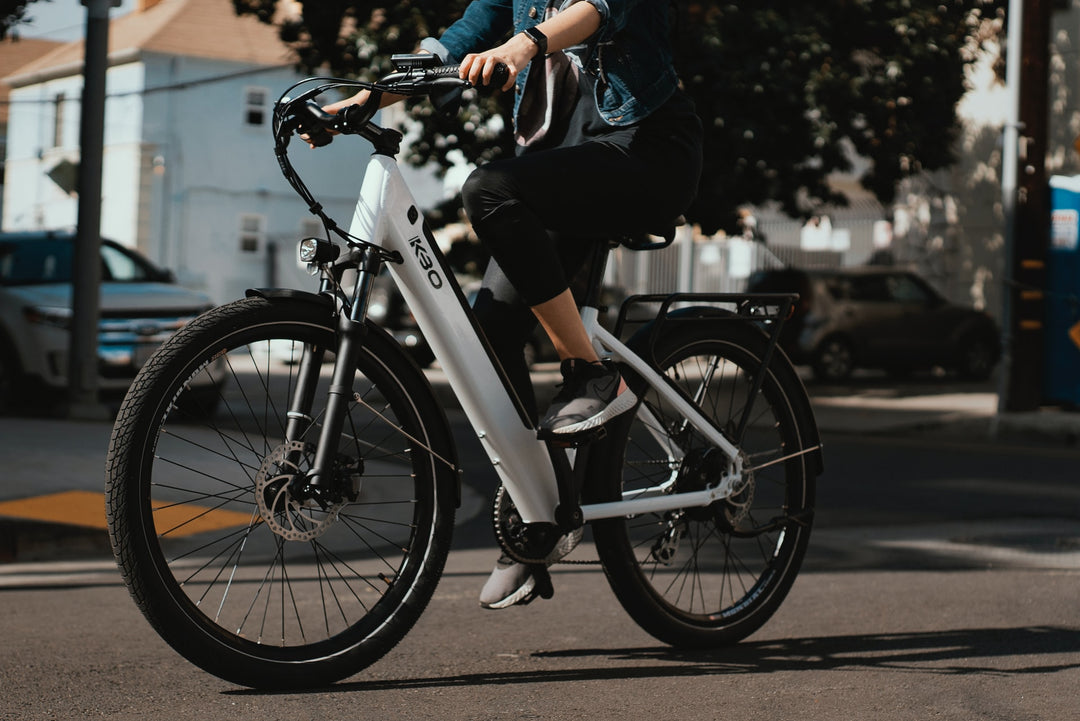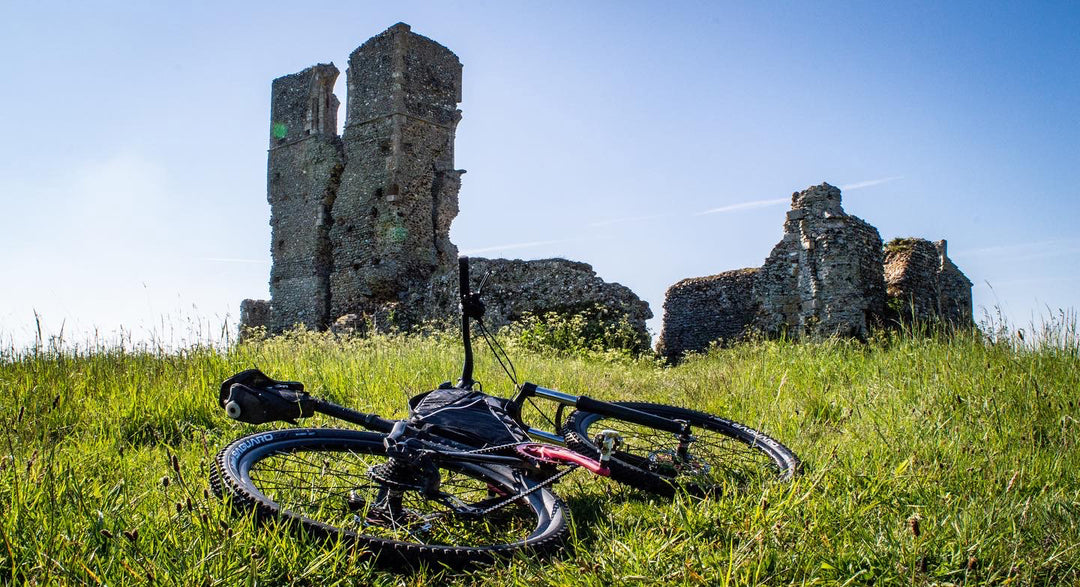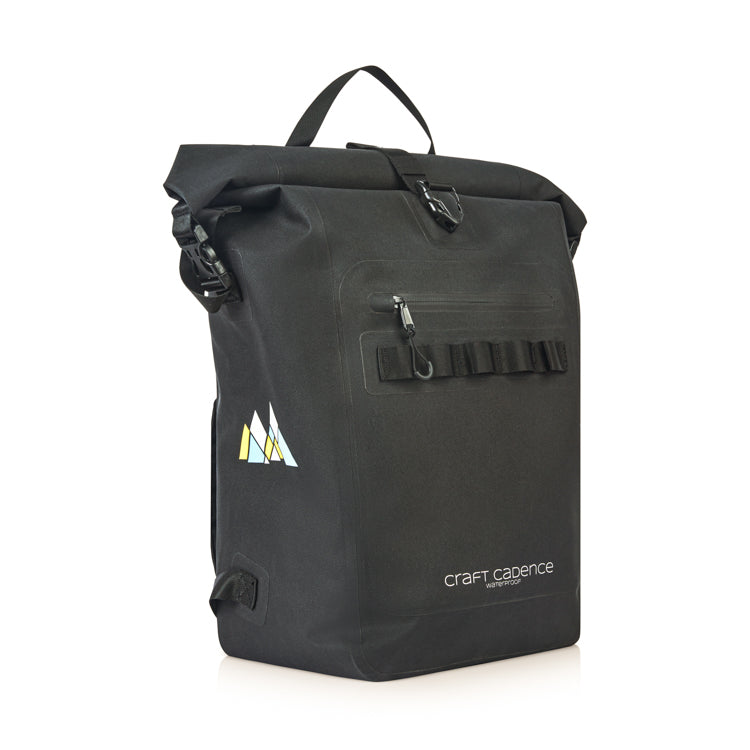A guide to cycle commuting in winter - how to prepare and even enjoy it
Cover photo credit: TheArcaneFlame
Winter is upon us, however, that doesn’t mean your bike should go into hibernation. While the weather is getting colder and wetter, cycling to work should still be an option for you to get your daily dose of fitness in.
Despite the cold, winter commuting by bike remains a healthier, cheaper and faster alternative to most other forms of transport, especially in busy cities. The key is in your preparation. We get it, it’s tough to get outside when it’s cold. But getting your preparation right will ensure safe cycling and a more enjoyable journey.
Here’s what you need to know about winter commuting by bike, and why you should ditch the car and jump on your bike.
Equipment
It goes without saying that having the right equipment will make winter riding much more enjoyable and safe. This includes having the right tyres, wearing the right clothing and being prepared for malfunctions.
So, safety first. It goes without saying that cycling in the winter should not be taken lightly. Daylight hours are shorter and visibility is worse, plus you’ll have to navigate through the usual traffic and bad weather. Therefore, you need to make sure you are visible. Cars don’t have the option of not having lights on at night, and neither should cyclists. If you don’t have a rear and front light on your bike then other road users might not be able to see you. You should be able to get away with a relatively cheap pair of LED lights, but the more you spend on lights the safer you will be.
Additionally, don’t skip wearing a helmet. It’s basics but many cyclists still opt for not wearing helmets when out on the road. The question you should ask is: If you can wear something that could potentially save your life, why would you turn that opportunity down? There are plenty of options available, for all budgets, so there is no excuse. For instance, this GIRO helmet is just £40.
Your bike setup is the next thing you should think about. After all, in bad conditions, you don’t want to deal with a malfunction on the side of a road! Check your bike before you set off, make sure your tyres are fully pumped up and the grip on them is still good (check out this article on tyre pressures), and make sure your brakes are working properly. A quick once over will ensure your brakes have enough stopping power, your gears are properly indexed, and your wheels are spinning smoothly. Watch this video for more information on what a good bike check looks like.
Lastly, wear the right clothing for winter commuting. Lycra shorts and a short sleeve top are not suitable! Investing in the right clothing will not only keep you warm and comfortable but will help motivate you. You want to actually wear your new kit. Think about long sleeve cycling tops, with a warm base layer underneath, cycling gloves, padded bottoms, cycling glasses and so on. Reflective clothing works best in the winter to improve the visibility of yourself to others. A good cycling bag or panniers will also help keep your work clothes, valuables and laptop safe and dry on the way.
Motivating yourself
The mental side of winter commuting is just as important as the physical, fitness side. Without good willpower, it’s far too easy to ditch the bike. However, there are some simple tips to ensure winter motivation.
Firstly, think about the cost savings you can make. If you have a bike already, it’s almost cost-free to start winter commuting. If you don’t have a bike, it’s a cost-effective solution to large monthly transport options. Every day cycling to work is a day without spending money on fuel or train/bus tickets.
The health benefits of cycling to work are paramount. According to a recent UK study, those who cycle to work have a 46% lower risk of developing heart disease, and a 45% lower risk of developing cancer. Keep that in mind if you are finding motivation hard to find.
You should also think about setting goals. Realistic goals keep you on track and continually aiming to reach them. It will also make tracking your progress a lot easier. That’s different for everyone, but it could be fitness or weight loss goals, or simply trying to cycle commute a minimum amount of times per week. Track your miles on an app like Strava - the app uses your phone GPS and other sensors to track your speed, distance, elevation, etc. This can really help you hit specific mileage goals each month. Strava actually has a ‘commute’ feature so you can track them separately from your leisure rides.
What makes winter commuting easier is getting into a routine. The first couple of times getting out into the cold will always be the toughest. It’s the same with any physical activity. The key is in making that first step. Don’t make excuses like ‘it’s too cold’. You’ve got to get into the right mindset and convince yourself that you want to start cycling to work.
If you are finding it difficult, finding a cycle buddy or joining a cycling club can provide the perfect encouragement. Having a group or individual to cycle with can have a really positive impact. A cycling buddy provides friendly competition and makes the cycle experience more enjoyable. It can get lonely on a bike! One of the best things about cycling is the sociable aspect.
Preparing right and getting into the right mindset is the key to enjoying, and maintaining, winter commuting. Remember, don’t make excuses. Get the right equipment and start now.



